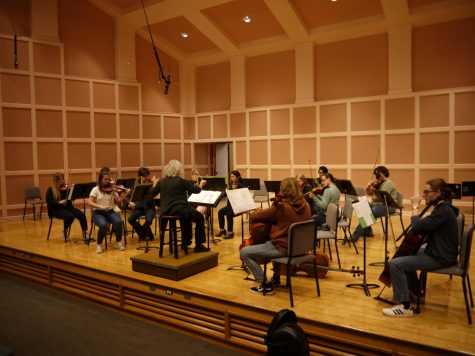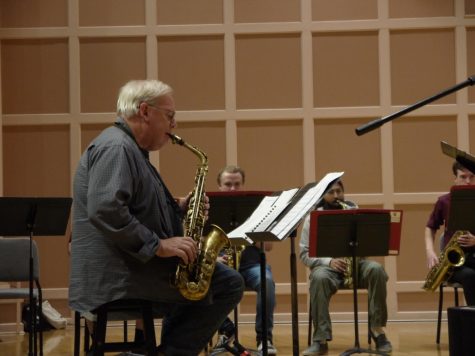Contemporary and traditional
Curriculum change in music program
October 4, 2022
No longer under the cloak of COVID-19, Hamline’s music program welcomes new and exciting opportunities for students.

Every program has had to adapt to the challenges of the pandemic. Arts programs were especially challenged simply because of the nature of their craft.
Choirs couldn’t rehearse too close together, making it difficult to hear other members. They also had to wear special masks that allowed for enough space between their mouth and a mask so it wouldn’t be in their mouth.
Orchestra also had to space out their ensemble members. Certain members who played brass, or wind instruments had to wear masks that zipped open and shut, so they could still play their instruments and restrict air flow.
All these precautions were put into place to protect students and faculty while still trying to give a rounded education in the arts. But now, as things have shifted to a reality we faintly remember from years prior, things seem to be picking up.
Hamline’s Music Program recently ushered in a new curriculum under the duress of covid, and it is now reaching light. They have installed new resources to give students opportunities to learn and integrate their practice with music technology.
The recording studio is the headline feature for the new music production program located in the Bush Memorial Library (BML) basement. It is being utilized to instruct students, under the direction of Professor of Practice Jeffrey Bailey, how to create music on the computer. Whether a student has a history in digital music, or none at all, the program offers opportunities for everyone to learn and integrate it into their musical practice.
Department Chair of the Music Program Janet Greene said that the goal of this new curriculum is to “blend contemporary skills and needs with traditional skills and needs.
With this new curriculum comes new opportunities, for not just music majors, but also ensemble members.

Jazz, orchestra, wind; these groups will also integrate modern technology into their rehearsal and skillset as musicians. The ensembles will get to experience studio sound, by playing with one another physically in the recording studio. Hearing the instruments through the headphones and understanding how that sound is translated to a digital format.
Another goal that comes with the new curriculum is the potential of employability for musicians post graduation.
“We can give our students job opportunities. We want you to make a living on it. We don’t want to leave students in the lurch like that,” Greene said. “There’s so many jobs that we haven’t attended to, but now with the new program we’ll be able to provide students with those opportunities.”
The Hamline Music Program is excitedly and joyfully taking strides to ensure the education and success of their students.
“Our community is expanding and with open arms. Welcoming in students who’ve never touched an instrument, and learned from music technology” Greene said.
Whether it be through the illustrious musical ensembles, or the undergraduate program itself, Hamline music is bound to move forward in this COVID-19 affected world.
The music program will be having a concert towards the end of the semester at 2:00 p.m. on Dec. 10 located in the Sundin Music Hall.
